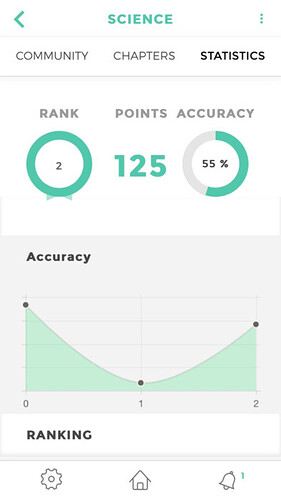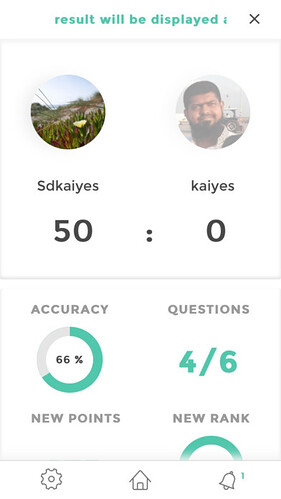I want to build some mobile app with meteor but I don’t kmow if I should use framework7 or build it using blaze from scratch because i heard framework 7 have some problem with routing
I’m using Blaze over at www.SkyRooms.io
Come create an account, poke around.
The main reason I’m using it is… because it LOOKS easiest. I’m not the best programmer on the planet. Keeping it simple when learning Meteor is of high importance to me. I’m coming in from a PHP background where things seem a lot easier.
React and other frame works seem so… scary and confusing. Reactive data in general blows my mind.
But, after a solid year of trial and fail, and quitting Meteor twice I’ve come to really enjoy react.
that was a very fast and cool website i really love it. but it is like build a full mobile UI look in css is kinda hard so i was just thinking about framework 7 which already provided everything but it seem that not many people using it so i just kinda curious  but thank for the cool tips
but thank for the cool tips
Hey thanks 
I have been able to export to iOS and Android, as well as build PC and Mac clients with this site. I’ll be working on those later next week and adding download links. Going to cost about $300 bucks to register for all the accounts I need.
So, really, as long as you’re using some sort of bootstrap based theme, you’re good. I’m not sure what Framework 7 is. But, you can head to ThemeForest.com and buy a nice HTML based theme, and import in to to Meteor. It wont work perfectly, lots of config you gota mess with because Meteor loads stuff in a different way (no src=“my.js”). But once you get it going it’s great.
I have an entire PHP Wordpress version of the site that is already complete, but I pulled it down because Meteor is better.
So start with a free Bootstrap theme to see if Meteor meets your needs. Cheers and good luck!
I have toyed with the idea of using Framework7 for the mobile portion of my app. I agree with you that it looks the most complete. I am particularly interested in the F7+VueJS part
For mobile, a personal favorite is OnsenUI.
good luck to you too, i was able to integrate framework 7 with a little big of hack using flow router i was now able to run it just like bootstrap and it work perfect
the vue and F7 was very cool but i have a few friend who i just taught meteor and i dont want to overload them yet xD but vue and flow router with a little bit of hack work awsome
Now that you remind me about it i think i would give onsen a try too
@keanghok We used meteor and framework 7 to build a mobile app recently. It had tons of ui related fixes that were done quick. Its still in development but you could get a look.
If you are thinking of mobile apps, I personally would stay away from bootstrap based mobile looking apps. Frameworks like F7 or onesn are making their play based on mobile so it has lots of little improvements that you will come to appreciate.
Routing matters in F7. If you use f7’s own routing system you will be able to use all the transitions that come with it. We decided to go with iron router and then realised that transition is missing. So we used a transition package https://atmospherejs.com/ccorcos/transitioner
and this got the job done.
From our experience, the more you stick to F7’s tried and tested components the better. However, if you are using react, onsenui is better. We found that onsenui doesn’t work very well with blaze so we had to ditch that. F7 works very well with blaze by the way. Almost like working with normal html and blaze.
Hit me up with questions if you have any
OMG you clear up so many of my questions, thank you kind sir  i was using FlowRouter and then using the mainView.router.loadContent() to do the loading right now i am still testing it. in your opinion do you it is better or should i switch to iron router
i was using FlowRouter and then using the mainView.router.loadContent() to do the loading right now i am still testing it. in your opinion do you it is better or should i switch to iron router
it doesn’t matter what router you use. Either F7’s router or Flow/iron. But each way has its own pros and cons. Just try with simple routing and get that working. And from that you will be able to see a certain pattern. For example, if you use flow/iron, you will be able to pass data easily through the router. On the other hand, If you use F7’s router, you will have to do a lot of template level subscription instead of router carrying some data
Recently I stumbled upon this initial attempt to make quasar-framework work with meteor that looks quite interesting.
Quasar + Meteor combo is very nice. There are a few downsides though, like working with fonts in subroutes.
Quasar will get new 1.4 version very soon which will be the biggest update since 1.0 and will bring a.o. new forms components.
Onsen UI integration for Vue is still in alpha but the guys said the API will get to the stable point in days and won’t be changed much later.
F7 + Vue integration is pure love, great stuff.
There is also new documentation translated for Weex, providing examples of how to use it with Vue. I cross my fingers for the future of this project.
aww i see thank men for all the tips, you save me a lot of time :3
Quasar framework just heard of it but look interesting though will give it a try
Thank you so much for sharing these screenshots, they greatly exposed me to ideas on the possibilities. They also provided a much needed comfort and confidence.
Quasa is great, but now it don’t work on Meteor.
i love quasar even tho i never used it (i mean, looking at docs and comments on different pages it looks very promising). Regardless of that, i am still leaning towards React Native. You basically make react app that is compiled into native mobile app. While there is additional learning curve for components and styling, it looks very similar to html/css/js.
With recent Uri package meteor-client-bundler you may find it very easy to implement backend-meteor w/ react-native client


